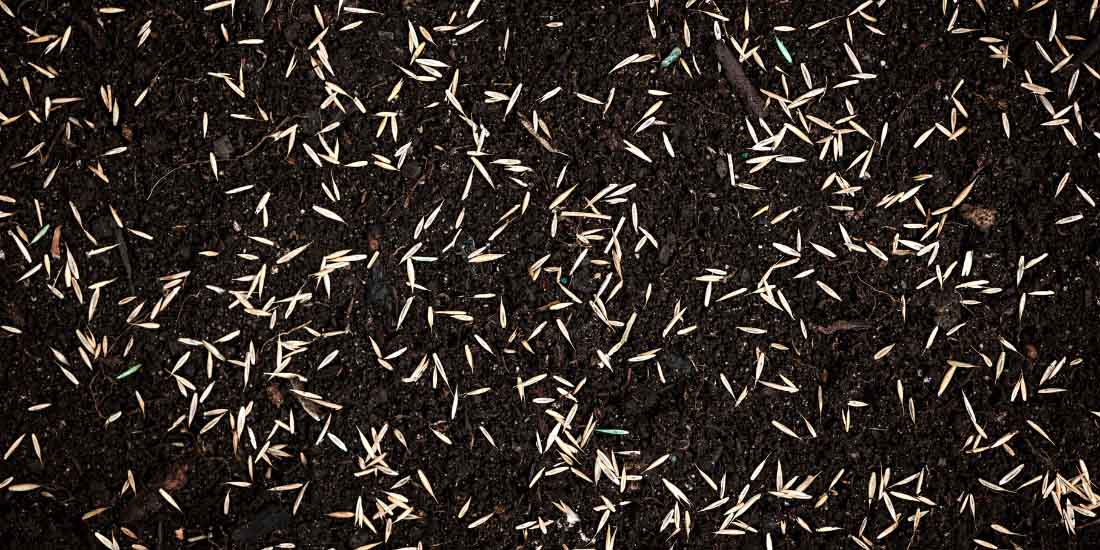5 Tips for sowing grass seed

Creating a lush and vibrant lawn starts with sowing grass seed properly. Whether you’re starting a new lawn from scratch or trying to fill in bare patches, knowing the best techniques for sowing grass seed can make a significant difference in the success of your lawn. Below we share five essential tips to help you achieve the best results when sowing grass seed. By following these guidelines, you can ensure even germination, strong growth, and a beautiful, healthy lawn.
Keep reading our five helpful tips for sowing grass seed to ensure your seedlings grow as quickly and efficiently as possible.
Our Expert Tips for Sowing Grass Seed
1) Prepare the Soil Before Sowing
Before sowing grass seed, it’s crucial to prepare your seedbed. Begin by removing any existing weeds, rocks, or debris from the area you intend to sow. Rake the soil to loosen it, then remove any clumps or large stones beneath the surface. Ideally, the soil should be loose and crumbly. If the soil is compacted, consider aerating it to improve drainage and root penetration. Using a pre-seed fertiliser at this stage boosts your soil’s nutrient density, encouraging quicker and better grass growth. Then, allow the area to cultivate for 10-14 days; this will encourage any dormant weeds to appear on the surface, which can then be removed by hand.
2) Choose the Right Seed to Sow
Selecting the best grass seed is essential for achieving the desired results. Consider factors such as the shade your lawn gets, the soil type, and lawn usage. Different grass species and varieties thrive in specific conditions; we have a guide on choosing the best grass seed to help you determine the best seed for your lawn.
3) Follow Proper Seeding Rates
Following our recommended grass seed sowing rates of 50g per m2 for a new lawn and 35g per m2 when overseeding an existing lawn is ideal. Applying too much seed will have your new seedlings competing for resources and stunted growth, while under-seeding may result in patchy areas. However, if you follow our seeding rates, your grass will have enough space to grow and develop strong root systems.
4) Sow Your Grass Seeds Evenly
Distributing the grass seed evenly across the designated area is crucial to see even growth across your garden. One effective method is to divide the seed into smaller portions and sow them in different directions, overlapping slightly to ensure adequate coverage. Using a seed spreader or taking your time spreading the seeds by hand can help you achieve an even distribution, especially for larger areas.
5) Water and Protect Your Grass Seed After Sowing
After sowing grass seed, proper watering is vital to support germination and early growth. Keep the seeded area moist, but avoid overwatering, as excessive moisture can lead to grass disease or rot. Lightly water the area daily or as needed for the first 6-8 weeks to prevent the soil from drying out. Protecting the newly seeded area from foot traffic, pets, and birds using temporary fencing or netting will also help its growth in these early stages.
Tips for Sowing Grass Seed
Sowing grass seed is important in establishing a lush and healthy lawn. By preparing the soil, choosing the right seed, following proper seeding rates, distributing the seed evenly, and providing adequate water and protection, you can greatly increase its growth from day one. Remember that growing a beautiful lawn takes time and patience, so be consistent with your lawn care practices. With these five tips in mind, you’ll be well on your way to enjoying a vibrant, green lawn that enhances the beauty of your outdoor space.
You may also find our ultimate grass seed guide helpful, and our advice on when to feed a lawn filled with great lawn tips, which will help you decide on when it’s best to use fertiliser.
If you have any questions about sowing grass seed or would like to discuss your new lawn project, please feel free to contact us; we are always happy to help.